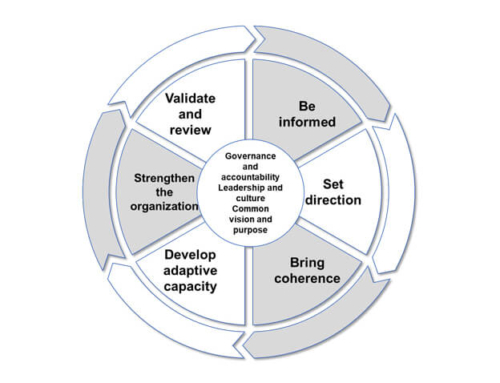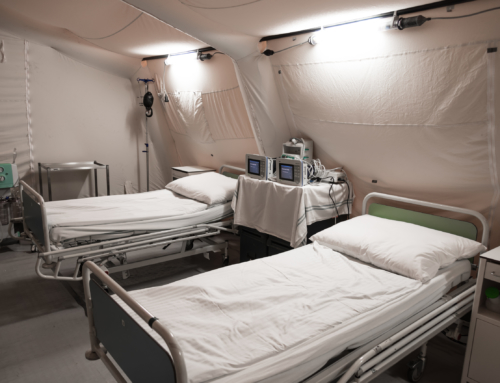Due to multiple threat possibilities (e.g. natural phenomena, increasing dependencies on information technology, international terrorism, blackouts, pandemics, etc.), emergency drills are an important tool to prepare a company/organization for such scenarios. Only those who are prepared and feel prepared can handle an emergency adequately and in a timely manner. If this is not the case, emergencies can develop into crises or even disasters for one’s own company/organization or even for other stakeholders.
This article is intended to shed a little light on the complex topic of emergency drills, emphasizing the importance and problem areas of such drills by highlighting some aspects. Thus, there is by no means any claim to completeness.
Importance of emergency drills

As mentioned earlier, we are all virtually at the mercy of a variety of threats that can result in physical or financial damage or damage to reputation. These threat opportunities are difficult for everyone to eradicate, so they are permanent fixtures of everyday life. However, hazards or vulnerabilities or risks can be reduced through appropriate measures so that there is less vulnerability to certain threat scenarios. Nevertheless, a certain residual risk always remains, which means that an emergency can occur despite all the measures taken. This is precisely where emergency and crisis management comes in. Adequately implemented emergency and crisis management can reduce or even minimize the effects of a damage situation. However, as with most things, the following applies here: Practice makes perfect.
The structure and procedure of emergency and crisis management are written down in the emergency preparedness planning and the emergency manual including the business continuation and recovery plans. Exercises allow validation of these written procedures for practicality, timeliness, effectiveness, and completeness. Thus, gaps in and opportunities for improvement of emergency planning are identified through practical runs of emergency scenarios. The gaps can then be closed directly in a practicable manner and improvement options can be incorporated. This permanently increases the own preparedness and thus resilience.
For the emergency team or the emergency or crisis team (hereinafter referred to only as the team), an exercise provides the opportunity to try out what has been learned without having to bear the real consequences of a wrong decision. It is therefore permitted to make mistakes in order to learn from these mistakes. This, together with experiencing stressful situations during the exercise, increases the ability to make decisions in such situations and under high pressure of responsibility, thereby also increasing the effectiveness of emergency and crisis management or the performance of the staff and each individual staff member. If all of this is not practiced, the realization that one is not up to the task or feels unprepared will lead to additional stress and lower performance in a real situation.
However, the opportunity to try out one’s role in emergency and crisis management also leads to a counter conclusion: Not everyone is suited for all roles/positions in the team or emergency and crisis management in general. An exercise helps determine this before a real situation arises. This can be done either by the individual or by other leaders. For such scenarios, a powerful team is needed, which is why personnel selection should always be based on skills and characteristics, not on rank or social aspects.
Through the exercises, the staff learns a certain kind of routine that is necessary for handling high-stress situations. But thinking through complex problems, anticipating events and mechanisms of action are also required, since crisis management in particular is characterized by the fact that no ready-made solutions or plans exist. This alone is a skill that is of enormous importance. However, it also increases the awareness for the necessity of emergency planning and for hazards/risks and the consideration of interconnections.
Testing emergency and crisis management enables the consolidation of the handling of valid frameworks, such as coordinated crisis communication with the general public, customers and authorities. This prevents contradictory or even incorrect communication and any resulting damage to the company’s image. It may also be necessary to cooperate with authorities or other stakeholders who may have completely different working methods or terminology. Thus, this cooperation must also be practiced in such a way that common, unambiguous communication and cooperation is made possible.
As a final point for this paragraph, another important aspect should be pointed out: Practicing and experiencing an emergency situation together also increases teamwork and motivation. Experiences have shown that after such exercises or even the experience of real situations, the cohesion within the team has increased massively and was more effective than common seminars for team building.
Problems of initialization
If emergency exercises are to be planned and carried out, it is first of all important that an emergency preparedness plan and an emergency manual including all accompanying documents exist, since otherwise, of course, the emergency plan cannot be tested. Likewise, the staff must have been formed in advance and all positions must have been defined. This also includes that each position is trained in the execution of the corresponding tasks, since in emergency exercises the theory is to be transferred into practice. If none of this is the case, the first step is for the leadership/management to consider introducing business continuity management or to expand it and raise it to an applicable level.
It must be clear that exercises in emergency and crisis management require a high level of resources. Above all, planning such an exercise requires a great deal of time and ties up personnel. It is not enough for the team to gather in a room and think through a scenario. First, the scenario must be planned and prepared before it can take place. This requires various writings, preparations of premises and the involvement of other people for exercise control, observation and coaching. After the exercise has been carried out, an evaluation must take place so that all the benefits of an exercise can actually be exploited. During the exercise, the planned emergency or crisis team must be released from actual work. All of this causes costs that many companies/organizations are not willing to bear. However, the probability that an inadequately handled real emergency scenario will lead to higher damages is immensely higher than the introduction and exercise of a business continuity management.
The scenarios to be practiced are therefore so time-consuming to create, as they must be realistic, inherently logical, correct in terms of content, demanding and specific to the target group. Actions or decisions of the staff must also be anticipated and reactions must be created in advance. Before an exercise scenario is completed, it requires many mental runs and is usually not one hundred percent preconceived even after the first real runs, since staffs always take different creative approaches (which is not only accepted but also desired, depending on the situation). Therefore, a certain amount of improvisational talent and accompanying expertise is always required from the exercise leader/controller. Thus, here too, care must be taken to select the right people. Because of this, as with BCM implementation, it can make sense for external companies to be entrusted with this task.
Unfortunately, a single exercise is not suitable for ensuring that emergency and crisis management is adequately internalized. There are different levels in building competencies/skills: Know, Understand, Penetrate. Means: First we read or hear something about the thing to be learned, so we know that there is such a thing and what it looks like in principle. This happens here in the construction of emergency planning (knowledge). The members then learn the skills that it takes in their position to handle emergencies on a staff basis. Theoretically, they are now in a position to become active (understanding). However, it is only through regular application that what has been learned is consolidated, subtleties become clear, procedures are optimized and internalized (penetration). Again: practice makes perfect.
The most common problems of an exercise team
First of all, it is important to mention that exercise scenarios should not directly have a too high degree of complexity. This is because in the beginning, only the basic skills should be consolidated, without which a collapse of the coping mechanism could occur in more complex situations, i.e. the situation cannot be controlled. Only with further cycles of practice can the level of difficulty be increased.
One problem with teams, which can or should be prevented in advance through education, is the misunderstanding of the team itself or the role of the positions. If the individual does not know or understand his or her tasks and responsibilities, he or she is unable to contribute to the management of the situation and thus becomes a disruptive factor. This also applies to the team itself. It must be clear about its position in the command structure and its responsibilities. It is not uncommon for tasks to be performed that are not intended for this particular team, but for higher-level or lower-level positions. Also, placing orders/notifications past existing structures is not only hierarchically prohibited and can lead to personal consequences, but also leads to a lack of information, misunderstandings or errors, and thus possibly to unclear and uncontrollable conditions.
By far the biggest problem in the context of actual management is communication or the flow of information. This applies both to the channels within the team as well as to the outside. This creates different pictures of the situation, which leads to inefficient work. Important information is not forwarded and does not reach its necessary destination, which causes actions not to be taken or sometimes even taken multiple times because it is assumed that it was forgotten elsewhere. Just think for yourself what you would or can do when there is pressure to act, but no messages or feedback about what is happening is available. Wrong decisions or complete standstill in emergency management can be the result. Often, this problem is countered with new technological solutions, such as team software. However, it is precisely this unfamiliar tool that is a disruptive factor in team work. The persons are only occupied with the operation of the unfamiliar software and are slowed down in their work speed by the unfamiliar operation. Therefore applies here: It is best to use what is used daily. Thus, the notepad and pen are often the best choice, even if not the trendiest.
Many teams do not apply the management cycle they are familiar with (often also called PDCA, i.e. Plan-Do-Control-Act cycle). Here, the focus should first be on exploring the situation so that decisions can be made on the basis of the findings. However, it is not uncommon for measures to be taken without even knowing what has happened. Unclear information is not checked, but assumptions are made directly, which, depending on the situation, can have devastating consequences. After the exploration, the next step in the cycle is the evaluation of the information and the weighing and making of decisions. These decisions result in actions to be taken either by other levels or by the individual positions. Often, however, such a division of work does not occur, but discussion groups are formed in which it is first evaluated how information is to be understood, or everyone works on the same task, so that a sequential and no parallel handling of tasks takes place. Also a task assignment to other levels often does not take place, because this is either simply forgotten (information flow, see above) or the task itself is to be processed, which does not correspond however to the responsibility (consciousness of the own role, see above). If the task is nevertheless carried out, it must be consistently evaluated whether the measures taken are effective. But even for this, inquiries must be made (since the other levels do not all report autonomously either), which, as discussed here, is precisely a problem from the beginning of the cycle.
In an emergency or crisis situation, many tasks must be handled, but it is not possible to do everything at the same time. Therefore, prioritization is needed. However, in order to prioritize, there must also be knowledge of certain lead times for certain actions and the ability to anticipate how the situation will unfold. It can be observed that many teams are not aware of this need for prioritization and anticipation. As a result, they take necessary actions too late and chase the situation. They react instead of acting.
Exercisers must have a certain imaginative ability for exercises to live in this artificial situation. This is because depicting real-life damage scenarios is not always possible or even useful. If the exercise is not taken seriously, the experience of real-like situations with pressure/stress cannot be tested and learned, which can result in wrong decisions and a forgetting of knowledge in real situations. If the scenario is adequately prepared and the trainees face it openly, it is not uncommon that people forget that it is “only” an exercise.
An article written by Jan Bäumer, published on 11 December 2018
Translated by Charlotte Ley






